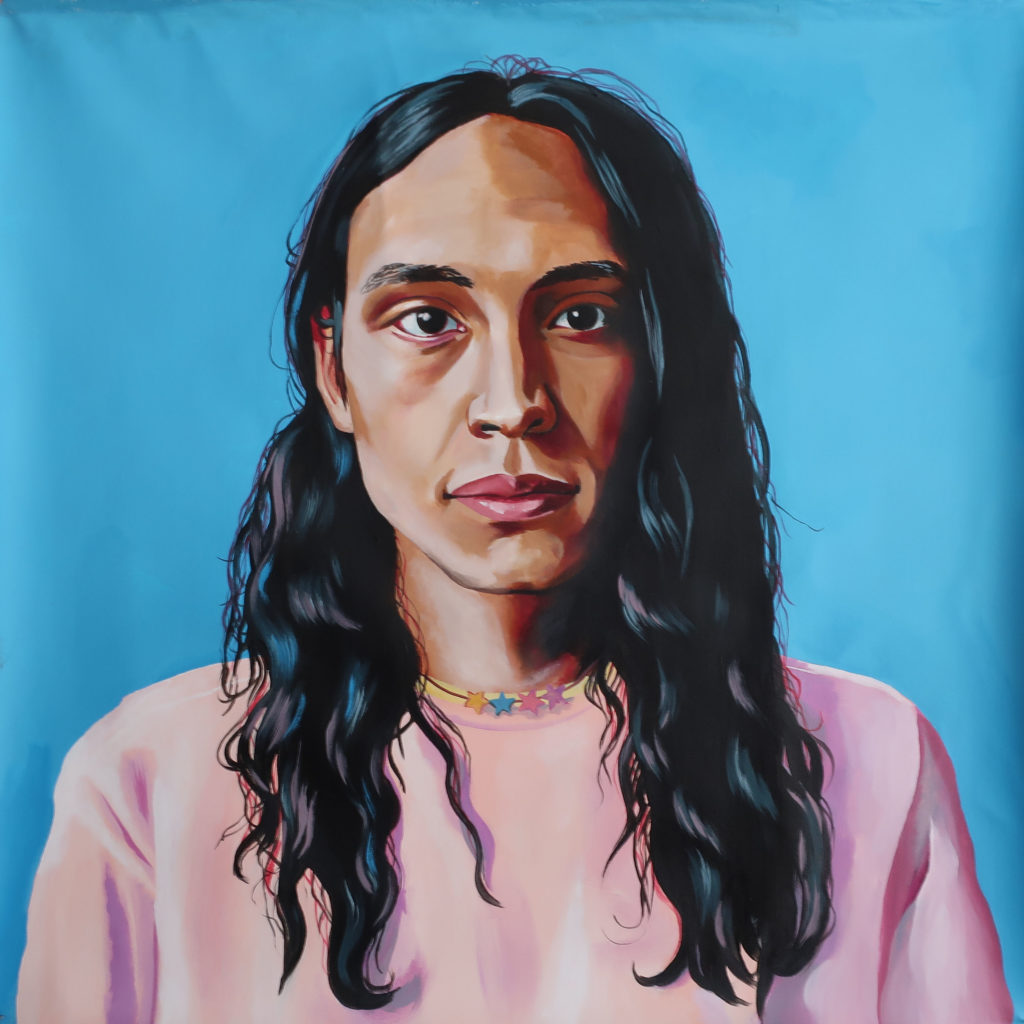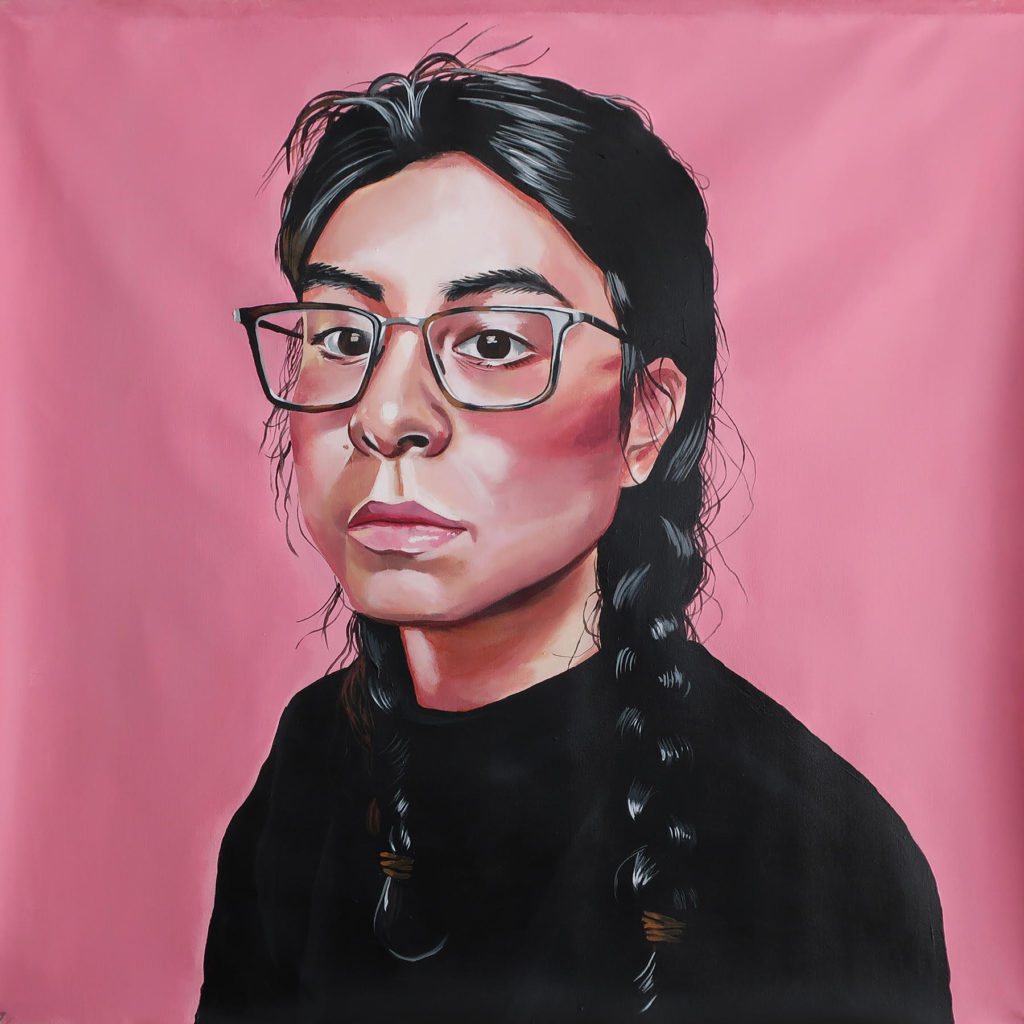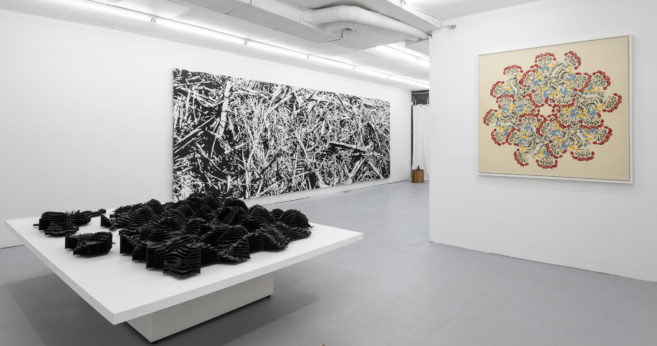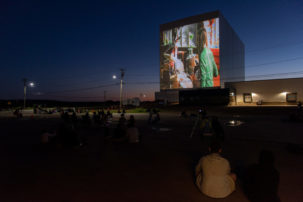When I walk into a hospital, it’s usually for an emergency. Usually there’s a family member, a friend, and I’m scurrying into the emergency room. For me, it’s often to visit family members who have been medevaced from my land in the Arctic.
On June 13, though, I was at the hospital for a very different reason. I walked in the University of Alberta Hospital and went straight inside to the McMullen Gallery for the opening of Lauren Crazybull’s “The Future All At Once.”
When I walked in, 10 minutes after the official start time, the room was packed. There was a variety of people there: from McMullen higher-ups, to Lauren’s family and friends, to patients in their hospital gowns.
Lauren Crazybull is a Dene and Niitsitapi painter (though also works in other media), and she does have a wide reach. Based in amiskwacîwâskahikan, she’s currently the inaugural Alberta Artist in Residence. “The Future All At Once” is her first solo show, and it is filled with portraits of my Indigenous peers. It was exciting to walk into a gallery filled with people for the opening of a young Indigenous woman artist.
From some brief conversations with Lauren I’ve learned that her preferred genre is portraiture. I myself have been in one of her portraits. And I can’t think of anyone challenging the coloniality of portraiture quite like Lauren does.
Often, when people think of Indigenous portraits, they think of photographs by white people capturing us in our most “stoic,” “savage” state. (See: Edward S. Curtis.) But I felt that in Lauren’s show, there was less of a viewer-portrait complex, and more of a conversation.

Lauren Crazybull, Seth, 2019. Acrylic on canvas, 36.5 x 37 in. Courtesy the artist and McMullen Gallery.
In the gallery, I could hear people talking about which portraits resonated the most for them. Some portraits were praised for their vibrant background hues, some were admired for their intricate detailing of hair, clothes and meanings, and some were acclaimed for what themes could be understood from the portraits.
One of my favourite paintings by Lauren is her portrait of Elijah Cardinal, which recently got her longlisted for the Kingston Prize. In this piece, called Power & Vulnerability, Lauren works with the lighting on Cardinal’s face and in the background beautifully.
In “The Future All at Once,” the paintings I loved most were the ones that made me re-evaluate who I was in the gallery. This effect could be off-putting for some people. But for Indigenous people, in my experience, this is fairly natural: we regularly have to re-evaluate whose land we’re on, who is privileged, whether or not we’re upholding systems of oppression for our kin, and so on. I think this is why Lauren’s preferred medium feels so natural to us as Indigenous sitters, viewers and fellow artists.
Lauren Crazybull is changing portraiture. She’s allowing us to change from being the portrayed to being the portrayers. We are no longer the image that colonialism wants—instead we are ourselves, embodied as people, and resisting colonialism.
If I learned one thing from this show, it’s that the Indigenous future is living among us, traversing, existing and leading the way. The future is Lauren Crazybull, the future is the sitters, portraits and their viewers. You just have to be open to learning from it.

 Lauren Crazybull, Self, 2019. Acrylic on canvas, 36 x 36 in. Courtesy the artist and McMullen Gallery.
Lauren Crazybull, Self, 2019. Acrylic on canvas, 36 x 36 in. Courtesy the artist and McMullen Gallery.






